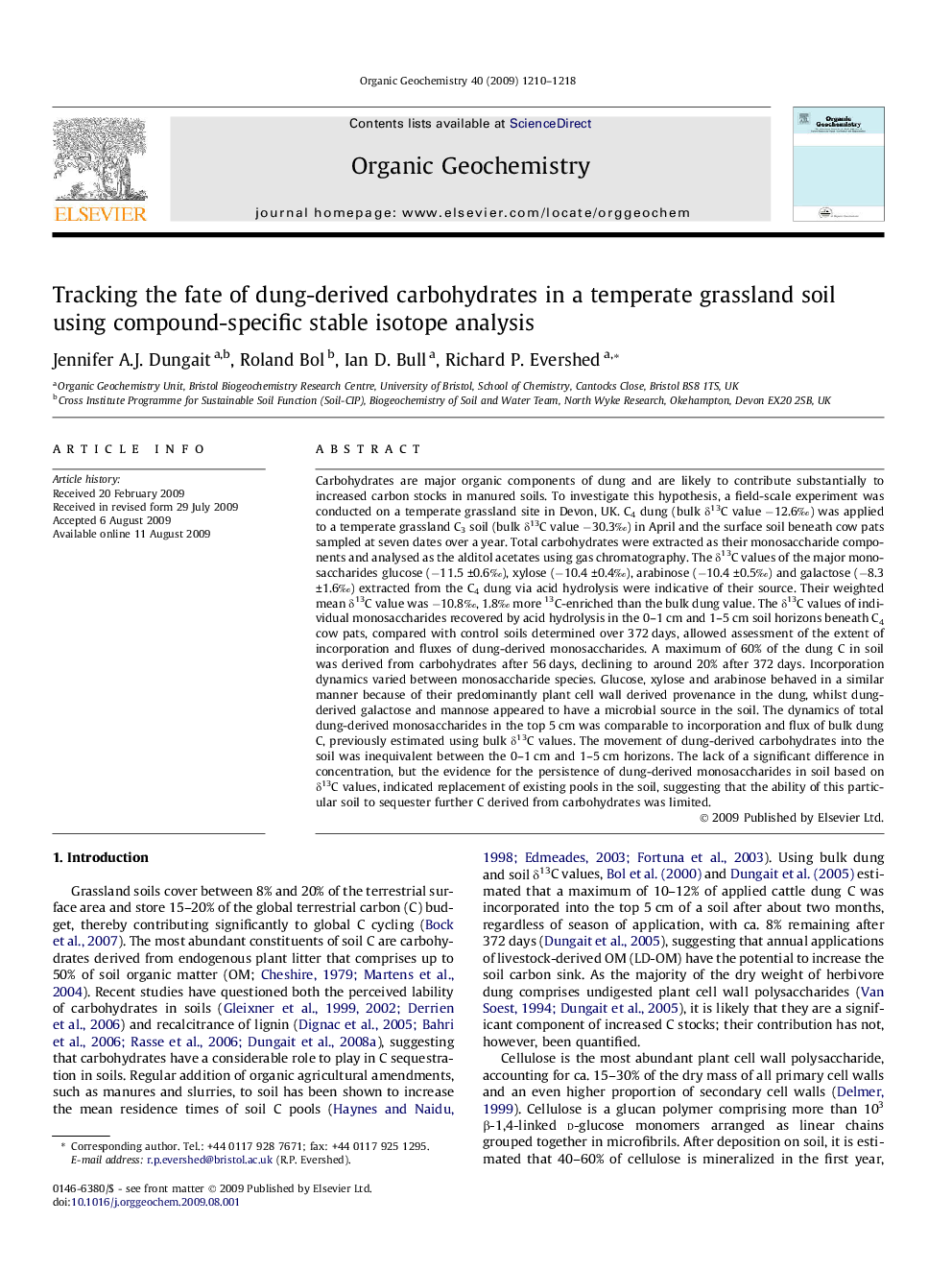| Article ID | Journal | Published Year | Pages | File Type |
|---|---|---|---|---|
| 5162855 | Organic Geochemistry | 2009 | 9 Pages |
Abstract
Carbohydrates are major organic components of dung and are likely to contribute substantially to increased carbon stocks in manured soils. To investigate this hypothesis, a field-scale experiment was conducted on a temperate grassland site in Devon, UK. C4 dung (bulk δ13C value â12.6â°) was applied to a temperate grassland C3 soil (bulk δ13C value â30.3â°) in April and the surface soil beneath cow pats sampled at seven dates over a year. Total carbohydrates were extracted as their monosaccharide components and analysed as the alditol acetates using gas chromatography. The δ13C values of the major monosaccharides glucose (â11.5 ±0.6â°), xylose (â10.4 ±0.4â°), arabinose (â10.4 ±0.5â°) and galactose (â8.3 ±1.6â°) extracted from the C4 dung via acid hydrolysis were indicative of their source. Their weighted mean δ13C value was â10.8â°, 1.8â° more 13C-enriched than the bulk dung value. The δ13C values of individual monosaccharides recovered by acid hydrolysis in the 0-1 cm and 1-5 cm soil horizons beneath C4 cow pats, compared with control soils determined over 372 days, allowed assessment of the extent of incorporation and fluxes of dung-derived monosaccharides. A maximum of 60% of the dung C in soil was derived from carbohydrates after 56 days, declining to around 20% after 372 days. Incorporation dynamics varied between monosaccharide species. Glucose, xylose and arabinose behaved in a similar manner because of their predominantly plant cell wall derived provenance in the dung, whilst dung-derived galactose and mannose appeared to have a microbial source in the soil. The dynamics of total dung-derived monosaccharides in the top 5 cm was comparable to incorporation and flux of bulk dung C, previously estimated using bulk δ13C values. The movement of dung-derived carbohydrates into the soil was inequivalent between the 0-1 cm and 1-5 cm horizons. The lack of a significant difference in concentration, but the evidence for the persistence of dung-derived monosaccharides in soil based on δ13C values, indicated replacement of existing pools in the soil, suggesting that the ability of this particular soil to sequester further C derived from carbohydrates was limited.
Related Topics
Physical Sciences and Engineering
Chemistry
Organic Chemistry
Authors
Jennifer A.J. Dungait, Roland Bol, Ian D. Bull, Richard P. Evershed,
